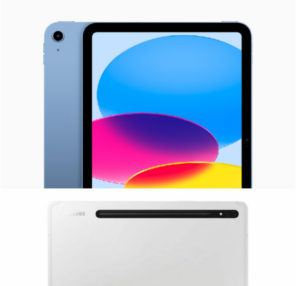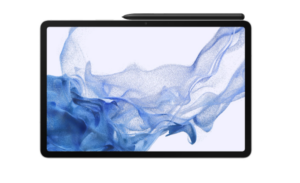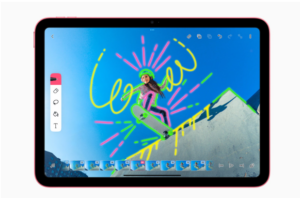
Tablets have become an essential tool for many people, whether for work or entertainment. The latest models from two of the most popular tablet brands, the Apple iPad 10 and Samsung Tablet S8 offer a lot of impressive features and capabilities.
This article will compare and contrast the key features of these two high-end tablets to help you decide which one is best for you. We will take a look at the display, performance, price, and other features of each device. By the end of this article, you will have a better understanding of the strengths and weaknesses of each tablet, enabling you to make an informed decision on which one to purchase.
Specs
| Specs | Samsung Galaxy Tab S8 | Apple iPad 10 |
| Weight | 503 grams | 477 grams |
| Memory & Storage | 128GB 8GB RAM, 256GB 8GB RAM, 256GB 12GB RAM, microSDXC (dedicated slot) | 64GB 4GB RAM, 256GB 4GB RAM |
| Display | TFT LCD, 120Hz,11.0 inches 1600 x 2560 pixels (~274 ppi density) | Liquid Retina, 10.9 inches
1640 x 2360 pixels (~264 ppi density) |
| Processors | Snapdragon 8 Gen 1 (4 nm) | Apple A14 Bionic (5 nm) |
| Rear Camera | 13 MP (Main), 6 MP (ultrawide) | 12 Mp (Main) |
| Front Camera | 12 MP | 12 MP |
| Charging Speed | 45W wired | 20W wired |
| Battery Capacity | 8000 mAh | |
| Release Date | 2022, February 09 | 2022, October 18 |
| Starting Price | $449.99 | $599.99 |
Design
On the design side of things, Samsung Galaxy’s Tab S8 and Apple’s iPad 10 have a lot more things in common than not. The cameras are placed on the same side. The only difference is that the Tab S8 has a dual camera setup with the magnetic strip for the S Pen directly below.
On the front side, the Tab S8 and iPad 10 are basically identical, save for the design differences, such as height and width. The Samsung tablet also sports slimmer bezels.
Display
Display is one area where the Tab S8 and iPad 10 differ a lot. The Apple iPad 10 features a 10.9-inch Liquid Retina display with a resolution of 1640 x 2360 pixels. The display has a pixel density of 264 pixels per inch (PPI), which delivers sharp, clear images. However, the iPad has an outdated 60Hz display, which is inferior to the Samsung Tab S8’s 120Hz high refresh rate display.
On the other hand, the newest Samsung tablet boasts an impressive 11-inch TFT LCD display with a resolution of 1640 x 2360 pixels. The pixel density of the Tab S8 is 274 PPI, which is slightly higher than the iPad 10. However, the most significant advantage of the Tab S8 is its 120 Hz high refresh rate display. This feature makes the display much smoother, resulting in a better overall user experience.
Both tablets’ screens look amazing. The only noticeable difference is the iPad 10’s reflectiveness which is because it doesn’t use a laminated display. All said and done, both displays provide an excellent viewing experience, especially when it comes to media consumption.
Battery and Charging
The Samsung Galaxy Tab S8 packs an 8000mAh battery cell, while in usual Apple fashion, the battery capacity of the iPad 10 isn’t revealed. Looking past the numbers, the battery life on the two are great and just what you’d expect from a Samsung tablet and an Apple iPad. Both can take you through a full day’s use without issues.
As for charging time, the Samsung tablet stomps out the iPad. The Samsung Galaxy takes around 80 minutes (1 hour and 20 minutes) to go from 0% to 100%, while the iPad 10 takes nearly 3 hours to fill up. In this day and age, that’s totally unacceptable, especially when you consider the Apple iPad 10’s price tag.
Software
Software is a very important factor to consider if you’re trying to pick between any of the two tablets. Both the iPad 10 and the Tab S8 run the latest software available, which is iPadOS 16.4.1 and Android 13L with One UI 5, respectively. When it comes to updates and longevity, the iPad 10 takes the win here, as it would be supported with the latest iPad OS versions for at least 7 years, while Samsung only promises 4 years of major software updates for the Tab S8.
So if you plan on using the tablet for a long time, you’ll probably be better off with the iPad 10.
Samsung Dex on the Galaxy Tab S8 is another software feature that you should probably consider when making the choice between the two devices. If you plan on using your tablet for anything related to work or just want a tablet that lets you leave your PC at home when you’re out traveling, Then the Samsung Galaxy Tablet is by far the better choice for you.
Performance
On paper, the A14 Bionic in the iPad 10 beats out the Snapdragon 8 Gen 1 inside the Galaxy Tab S8 in just about every test. But when it comes to real-life usage, the performance difference between the two isn’t that noticeable. Both will run apps and games, even graphically intensive ones, smoothly. The only major benefit of the performance difference between the two tablets is that the iPad 10 will work better in the long run.
Price
As of the time of writing this article on the official websites of both companies. The Samsung Galaxy Tab S8 (WiFi) starts at $384.99 for the base 8GB RAM + 128GB storage configuration, while the Apple iPad 10 (WiFi) starts at $449.99 for a measly 4GB RAM + 64GB storage configuration.
Also, take into account that the Samsung Galaxy Tab S8 comes with the S Pen stylus in the box, while you’ll have to purchase the Apple Pencil 1 for $169 if you want a stylus for your iPad 10. Not just that, but you’ll also need to purchase a Lightning to USB-C and a USB-C to USB-C cable to use and charge the Apple Pencil 1. The Tab S8 also supports expandable storage.
Conclusion
After examining the key features of the Apple iPad 10 and Samsung Tablet S8, it is clear that both devices offer impressive capabilities and features. The iPad 10 boasts a sleek design, powerful performance, and software longevity, making it an excellent choice for creative professionals and power users. Meanwhile, the Samsung Tablet S8 delivers a beautiful display, an S Pen stylus in the box, and faster charging, making it ideal for multimedia consumption and productivity. Ultimately, the best tablet for you will depend on your specific needs and preferences. So, whether you’re a first time buyer or looking to upgrade your current tablet, we hope that our in-depth comparison has helped you make an informed decision and choose the tablet that best fits your needs.








